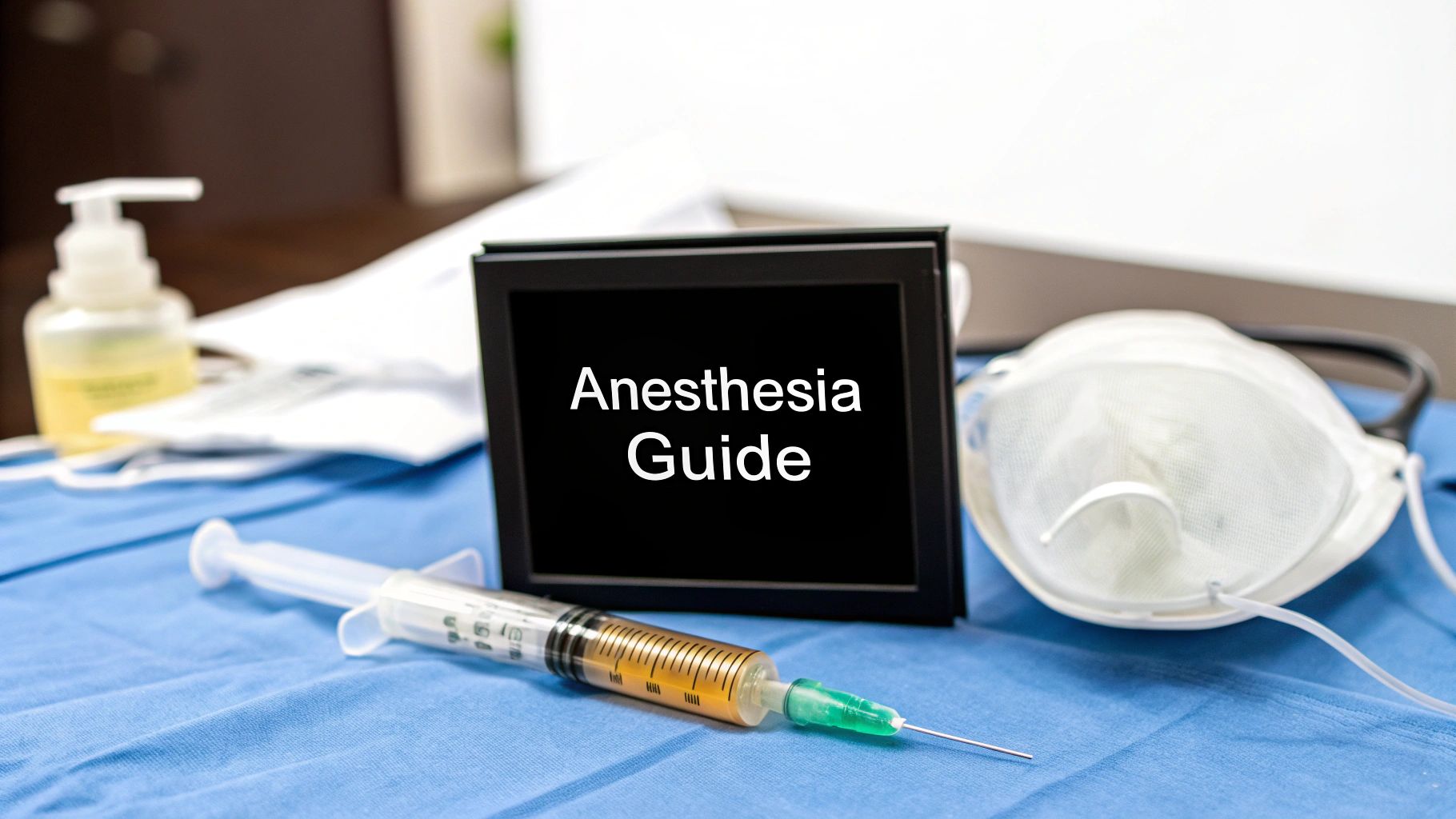
October 12, 2025
Anesthesia Types for Surgery A Patient's Guide
Discover the main anesthesia types for surgery. This guide explains general, regional, local, and sedation to help you prepare for your procedure.
Aug 24, 2025

In plastic surgery, achieving impeccable surgical results is only part of the equation. Patient satisfaction has emerged as a fundamental pillar that shapes the overall success of procedures, the reputation of surgeons and clinics, and the long-term quality of life for patients. This article explores why patient satisfaction holds paramount importance, what factors influence it, and how it impacts both clinical outcomes and plastic surgery practices.
Patient satisfaction plays a crucial role in the overall success of a plastic surgery practice. It affects the patient's willingness to return for future procedures and their likelihood to recommend the surgeon or clinic to others. A high satisfaction level can lead to positive online reviews and word-of-mouth referrals, which are essential for attracting new patients.
In the context of healthcare reforms, patient satisfaction scores are increasingly linked to reimbursement. Programs like the CMS Hospital Value-Based Purchasing (VBP) promote higher payments for providers who achieve excellent patient experience ratings. This means that satisfied patients not only enhance the reputation and growth of the practice but may also contribute to more stable financial performance.
Moreover, satisfied patients are more likely to trust and adhere to their treatment plans, resulting in better clinical outcomes. They also tend to develop stronger relationships with their physicians, fostering ongoing loyalty and referrals.
Conversely, dissatisfaction can lead to negative reviews, diminished reputation, and loss of future business. Common dissatisfaction sources include billing issues, delays, or poor communication. Therefore, focusing on the patient experience—from effective communication and empathy to personalized care—is vital in the competitive field of plastic surgery.
Ultimately, patient satisfaction is not just a measure of service quality but a strategic component influencing practice growth, financial health, and professional reputation.

Effective communication from the surgeon is fundamental in shaping patient satisfaction after plastic surgery. Patients value clear, thorough explanations of procedures, which help set realistic expectations and reduce uncertainties. When surgeons take time to educate patients about what to expect before and after surgery, patients tend to feel more confident and assured in their care.
Answering questions openly and comprehensively demonstrates the surgeon's concern for patient worries and fosters trust. Patients report higher satisfaction levels when they feel their concerns are listened to and their questions are addressed sincerely. This ongoing dialogue not only alleviates fears but also builds a strong relationship between patient and provider.
Including patients in the decision-making process enhances their sense of control and ownership of their treatment. When surgeons involve patients in choosing among options and respect their preferences, it improves overall satisfaction and aligns expectations with possible outcomes.
Compassionate care, characterized by empathy and a warm bedside manner, significantly boosts patient confidence and satisfaction. Patients are more likely to recommend surgeons they perceive as caring and attentive, especially when their emotional needs are acknowledged.
Patients' confidence in their surgeon's skills and genuine concern for their questions influence their trust. High trust levels increase the likelihood of recommending the surgeon or practice, fueling positive reviews and word-of-mouth referrals.
While factors such as waiting times and staff interactions do affect satisfaction, surgeon-centered elements like communication, empathy, and confidence are more influential. They directly impact patients’ perceptions of care quality and their willingness to return or recommend the surgeon.
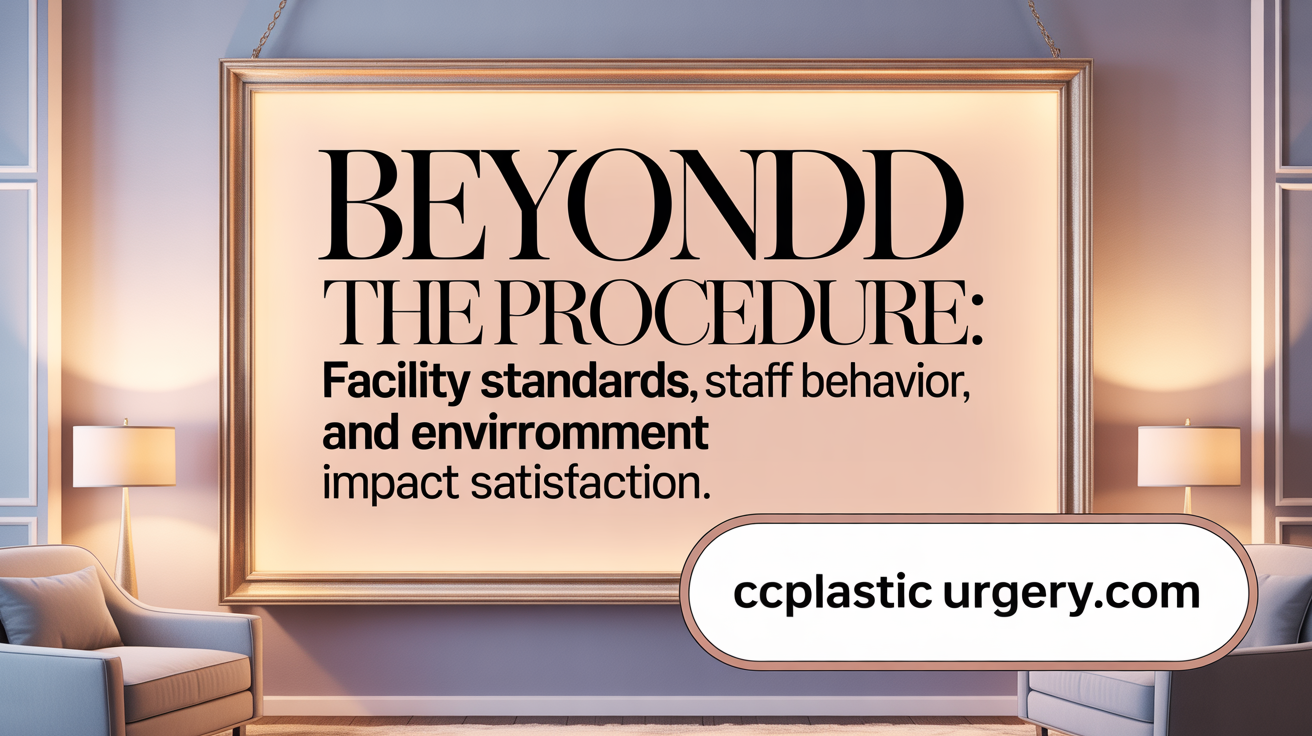
Health facility standards, including cleanliness, safety protocols, and overall organization, play a significant role in shaping patients' perceptions of care. When hospitals and clinics maintain high standards, patients often feel more secure and satisfied with their experience.
Staff interactions are crucial in enhancing patient satisfaction. Compassionate, respectful, and efficient staff make patients feel valued and cared for, which improves overall experience and trust.
An organized care process, clear communication, and easy access to appointments help reduce patient stress and dissatisfaction. When patients can efficiently navigate scheduling and receive timely care, their trust and satisfaction increase.
Long waiting times and poorly managed schedules negatively affect patient perceptions. Improving appointment systems and reducing waits are vital strategies to boost patient satisfaction.
A welcoming, clean, and comfortable environment contributes to positive patient perceptions. Physical surroundings can enhance the overall experience, making patients more likely to recommend the practice or hospital.
| Element | Effect on Patient Satisfaction | Additional Notes |
|---|---|---|
| Health Facility Standards | Significantly improves perceptions of safety and quality | Higher standards lead to trust |
| Staff Service Quality | Critical for feeling cared for and respected | Empathy and professionalism matter |
| Organization and Accessibility | Smooth processes reduce stress and confusion | Clear instructions increase compliance |
| Waiting Time | Longer waits are linked to dissatisfaction | Streamlining scheduling helps |
| Facility Environment | Enhances overall comfort and trust | Cleanliness and comfort show professionalism |
Efforts to improve these facility-related elements can enhance patients' views, leading to better satisfaction, increased likelihood to recommend, and a stronger reputation for healthcare providers.

Patient feedback provides essential insights into their experiences and satisfaction levels following plastic surgery. When patients share their perceptions, it helps healthcare providers identify strengths and areas needing improvement, such as communication, clinic environment, or waiting times.
Online platforms like RealSelf and social media serve as influential tools for shaping a surgeon's reputation. Positive reviews about aesthetic results and bedside manner can attract new patients, while negative feedback about outcomes or care can impact reputation and business.
| Review Type | Common Reasons | Impact on Practice |
|---|---|---|
| Positive | Excellent aesthetic outcomes, compassionate bedside manner, clear communication | Enhances reputation, attracts future patients |
| Negative | Dissatisfaction with outcomes, poor communication, long waiting times | Deters potential patients, may require practice improvements |
Social media reviews offer immediate feedback on patient experiences. They reveal factors like aesthetic results and physician interaction, which are crucial for patient perceptions. Practice owners use this data to refine their services.
Studies have shown that aesthetic outcomes and how doctors interact with patients heavily determine satisfaction levels. Compassionate care and visible improvements in appearance lead to higher positive ratings and recommendations.
In plastic surgery, accurately assessing patient satisfaction is essential for improving care and outcomes. Validated patient-reported outcome measures (PROMs) are specialized questionnaires designed to capture the patient's perspective on their surgical results and overall experience. These tools are rigorously tested for reliability and validity, ensuring that the data collected truly reflects the patient's views.
Both qualitative and quantitative data play crucial roles in understanding patient satisfaction. Quantitative feedback, often in the form of numerical scores, provides measurable insights into patient perceptions. Meanwhile, qualitative feedback—such as open-ended comments—offers deeper understanding of individual patient experiences, concerns, and expectations. Combining these approaches gives a comprehensive view that can guide improvements.
Ad hoc questionnaires, created without standardized validation, can lack consistency and reliability. They often fail to fully capture the multi-dimensional nature of patient satisfaction and may overlook important aspects like emotional well-being or subtle concerns. Using unvalidated tools can lead to inconsistent results, making it difficult to compare outcomes across different studies or practices.
To address these issues, specialized questionnaires such as the BREAST-Q and BRASSQ have been developed for specific procedures. These instruments cover various domains, including aesthetic satisfaction, physical function, and psychosocial well-being. They are validated for their particular patient populations, allowing for precise assessment of outcomes related to each procedure.
Patient self-assessment is invaluable in understanding surgical success from the patient's viewpoint. It helps identify areas needing improvement and provides timely feedback on satisfaction levels. Self-reported data also assists in tailoring postoperative care and managing expectations, ultimately leading to higher satisfaction and better clinical outcomes.
| Aspect | Description | Examples |
|---|---|---|
| Validated Measures | Standardized tools with proven reliability | BREAST-Q, BRASSQ |
| Feedback Types | Quantitative scores and qualitative comments | Satisfaction scores; open-ended remarks |
| Limitations of Unvalidated Tools | May lack consistency and comprehensive coverage | Ad hoc questionnaires |
| Significance of Self-Assessment | Guides personalized care and outcome evaluation | Patient reviews, satisfaction surveys |
By effectively implementing validated PROMs, collecting both qualitative and quantitative feedback, and emphasizing patient self-assessment, plastic surgeons can better understand patient satisfaction and continuously enhance their services.
Studies show that approximately 95% of plastic surgery patients report being satisfied with their results. Most believe that their procedures were worth the investment, reflecting high overall approval levels in the field.
Despite the high satisfaction rates, about 20% of patients report some dissatisfaction post-surgery. Common reasons include unrealistic expectations about outcomes, unforeseen complications, asymmetry, or undesirable scarring.
Unmet expectations can lead to feelings of disappointment and frustration. When patients anticipate perfect results and these are not achieved, they may experience decreased confidence and dissatisfaction.
Complications such as infections, poor wound healing, or asymmetry also contribute significantly to dissatisfaction. These issues can undermine the perceived success of the procedure even if the clinical outcome aligns with medical standards.
Patients' emotional and psychological states play a vital role. Those who seek surgery to please others or to fill emotional voids may be more prone to dissatisfaction if results don't meet their hopes. Psychological responses may include regret, lowered self-esteem, or feelings of regret.
Effective communication about realistic outcomes, potential risks, and the recovery process is critical. Pre-operative counseling helps patients develop appropriate expectations, reducing the likelihood of dissatisfaction.
Postoperative support, including counseling if necessary, can also aid in addressing unmet expectations or complications. Managing expectations and providing thorough education are essential steps to enhance patient satisfaction and overall experience.
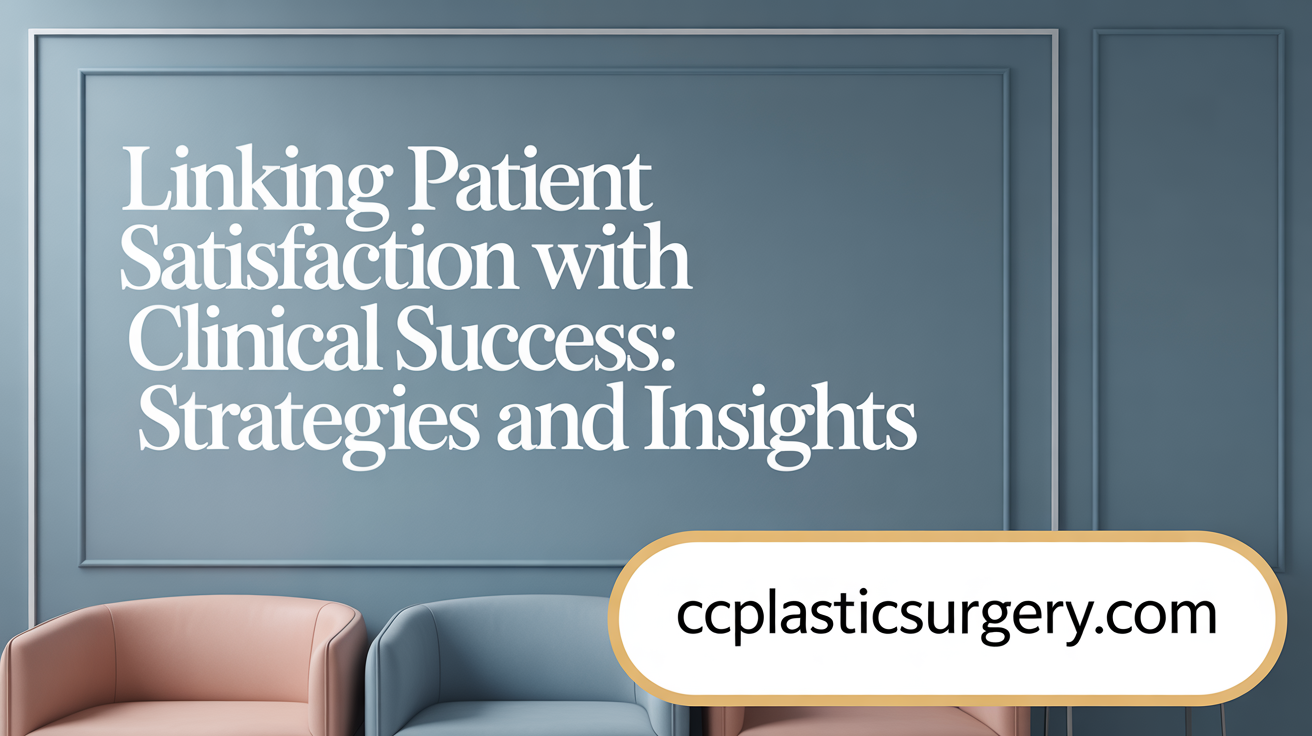
While a successful surgical outcome is important, it does not automatically guarantee high patient satisfaction. Factors like hospital size and low mortality rates\—though indicative of quality care\—are only weakly linked to patient happiness. Instead, patient satisfaction depends more on the experience they have during their care journey and how well their expectations are managed.
Research shows a strong positive link between patient satisfaction and improvements in quality of life post-surgery. In a recent study, 76.8% of patients reported being satisfied with their results, with many noticing significant gains in physical appearance. Importantly, there was a high correlation (regression coefficient of 0.754; P < 0.001) indicating that satisfaction levels closely align with the enhancements in daily life and confidence.
Physicians agree that higher satisfaction relates to better psychological well-being. Patients often experience increased self-esteem and more positive body image after successful procedures, which further boosts their overall happiness and satisfaction. These psychological benefits are essential outcomes, emphasizing that success is not purely measured by aesthetic changes but also by improvements in mental health.
Thorough education before and after surgery sets realistic expectations and prepares patients psychologically for the recovery process. Clear communication about what to expect can significantly impact satisfaction levels, especially regarding possible pain or complications. This comprehensive approach ensures patients feel more informed, respected, and involved, leading to better overall experience and loyalty.
Satisfied patients are more likely to adhere to treatment plans, follow-up appointments, and post-operative care instructions. This adherence reduces the risk of complications and enhances clinical outcomes. Furthermore, high satisfaction reduces the likelihood of malpractice claims, as patients are more forgiving and understanding when their expectations are met or managed effectively.
| Aspect | Effect on Satisfaction | Additional Notes |
|---|---|---|
| Surgical Outcomes | Not solely decisive | Overall experience influences happiness more |
| Quality of Life | Strong positive correlation | Improved physical and mental health |
| Psychological Well-being | Enhances satisfaction | Self-esteem and body image are vital |
| Education & Communication | Critical | Helps set realistic expectations and reduce dissatisfaction |
| Compliance and Trust | Improves adherence | Leads to better results and fewer legal issues |
Understanding the multifaceted connection between patient satisfaction and clinical outcomes highlights the importance of comprehensive care. Effective communication, psychological support, and managing expectations are vital for optimizing both patient happiness and surgical success.
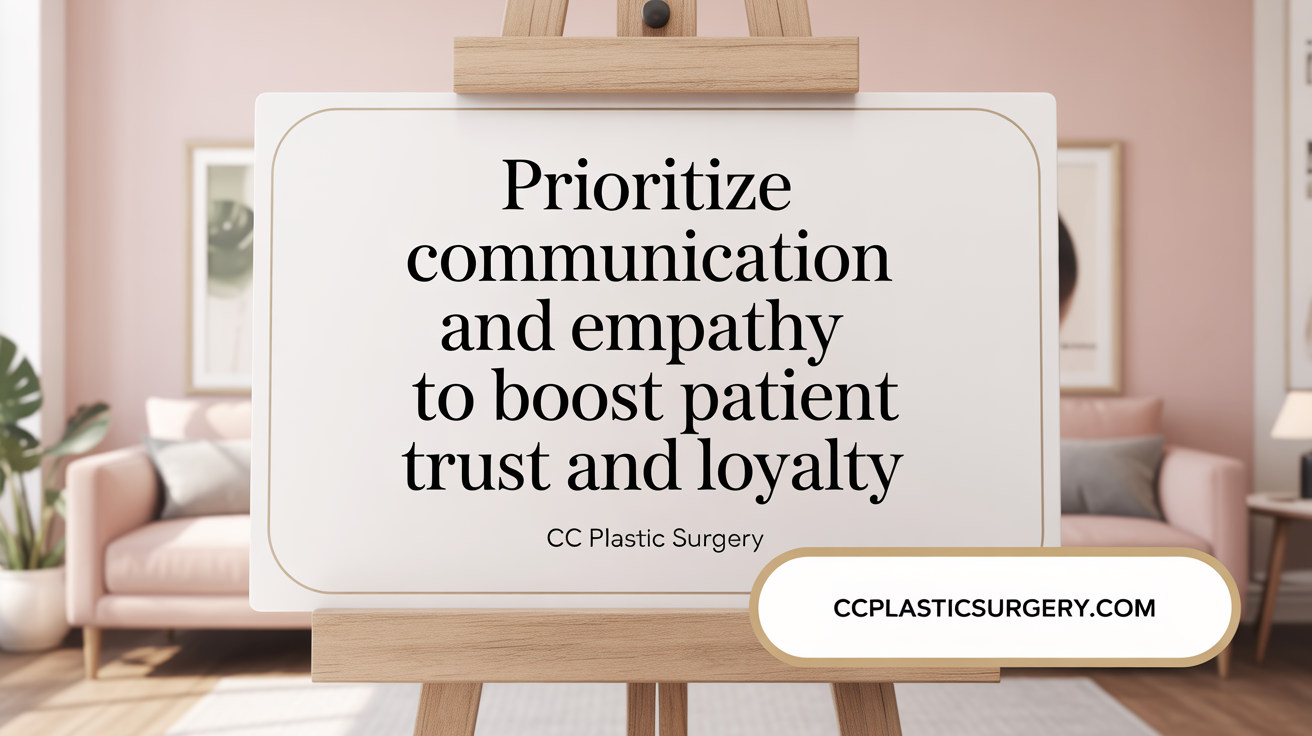
Effective communication and genuine empathy are fundamental to patient satisfaction in plastic surgery. Patients value when their surgeon takes the time to listen carefully, answer all questions thoroughly, and demonstrate concern for their worries. This builds trust and reassures patients that they are cared for as individuals, not just procedures.
Spending meaningful, quality time enhances the patient experience. When surgeons include patients in decision-making and dedicate sufficient time to discuss procedures and outcomes, patients feel more valued and confident. This personalized approach leads to higher satisfaction scores and stronger loyalty.
Setting clear expectations pre-surgery regarding results, recovery, and potential risks influences patient perceptions positively. Responsiveness to questions and concerns during and after treatment further strengthens trust. Patients who perceive their surgeon as attentive and transparent are more likely to recommend their practice.
Patients recognize the importance of feeling their surgeon genuinely cares about their individual issues. A surgeon’s concern for questions and worries signals respect and professionalism, prompting more favorable reviews and increased likelihood of recommendations.
To boost patient satisfaction, clinics should focus on improving communication skills through training, ensuring ample time during consultations, and creating a welcoming atmosphere. Using clear, compassionate language and involving patients in decisions foster a sense of partnership. Additionally, consistent follow-up and transparent information about procedures and recovery enhance trust.
In summary, prioritizing effective communication, empathetic interactions, and allocated consultation time significantly elevates the overall patient experience in plastic surgery. These efforts improve not only satisfaction but also the likelihood of positive recommendations, vital for a thriving practice.
Patient satisfaction metrics are vital tools for assessing and enhancing the quality of plastic surgery services. By systematically collecting data through validated questionnaires, clinics can benchmark their performance against industry standards or competitors. This process helps identify strengths and areas needing improvement, especially in surgeon-patient communication and postoperative care. Regular analysis of satisfaction scores fosters a culture of continuous quality enhancement, ensuring practices adapt effectively to patient needs.
Improving the physical environment, reducing waiting times, and streamlining appointment systems contribute significantly to patient satisfaction. Employing principles like Batho Pele, which emphasizes 'people first,' guides service improvements focused on empathy, accessibility, and respectful interactions. Training staff in effective communication and cultural competence further elevates the patient experience. Creating a welcoming, clean, and organized care setting encourages trust and comfort.
Patient satisfaction plays a increasingly influential role in healthcare reimbursements and physician rankings. Many systems incorporate patient-reported outcomes into performance evaluation, affecting reimbursement levels and practice reputation. Satisfied patients are more likely to recommend their surgeons, positively impacting online reviews and practice visibility. These incentives highlight the importance of prioritizing patient-centered care.
Strategic planning that includes benchmarking, goal setting, and outcome tracking is essential for sustained quality improvement. Continuous efforts, such as staff training, process optimization, and adopting new technologies like telemedicine, help practices refine care delivery. Regular review of patient satisfaction data ensures that clinics remain responsive to evolving patient expectations and industry standards.
High patient satisfaction enhances loyalty, increases likelihood of recommendations, and fosters positive word-of-mouth. Satisfied patients also adhere better to follow-up and treatment plans, improving clinical outcomes. Operationally, satisfied patients can result in shorter revenue cycles and fewer disputes, boosting financial performance. Overall, focusing on satisfaction not only improves care quality but also drives practice growth and sustainability.
Patient satisfaction stands as a cornerstone in the evolving landscape of plastic surgery, encompassing much more than surgical results alone. Through transparent communication, empathetic care, and patient involvement, surgeons enhance trust and positive perceptions that contribute meaningfully to satisfaction. Meanwhile, the broader patient experience—from waiting times to facility standards—also shapes attitudes and future behaviors. High satisfaction not only elevates patient quality of life but also supports the economic and reputational success of surgical practices. Employing validated patient-reported outcomes and ongoing quality improvement initiatives ensures that care remains patient-centered and responsive. Ultimately, prioritizing patient satisfaction forms the backbone of delivering excellence in plastic surgery, fostering both happier patients and thriving clinical practices.

October 12, 2025
Discover the main anesthesia types for surgery. This guide explains general, regional, local, and sedation to help you prepare for your procedure.
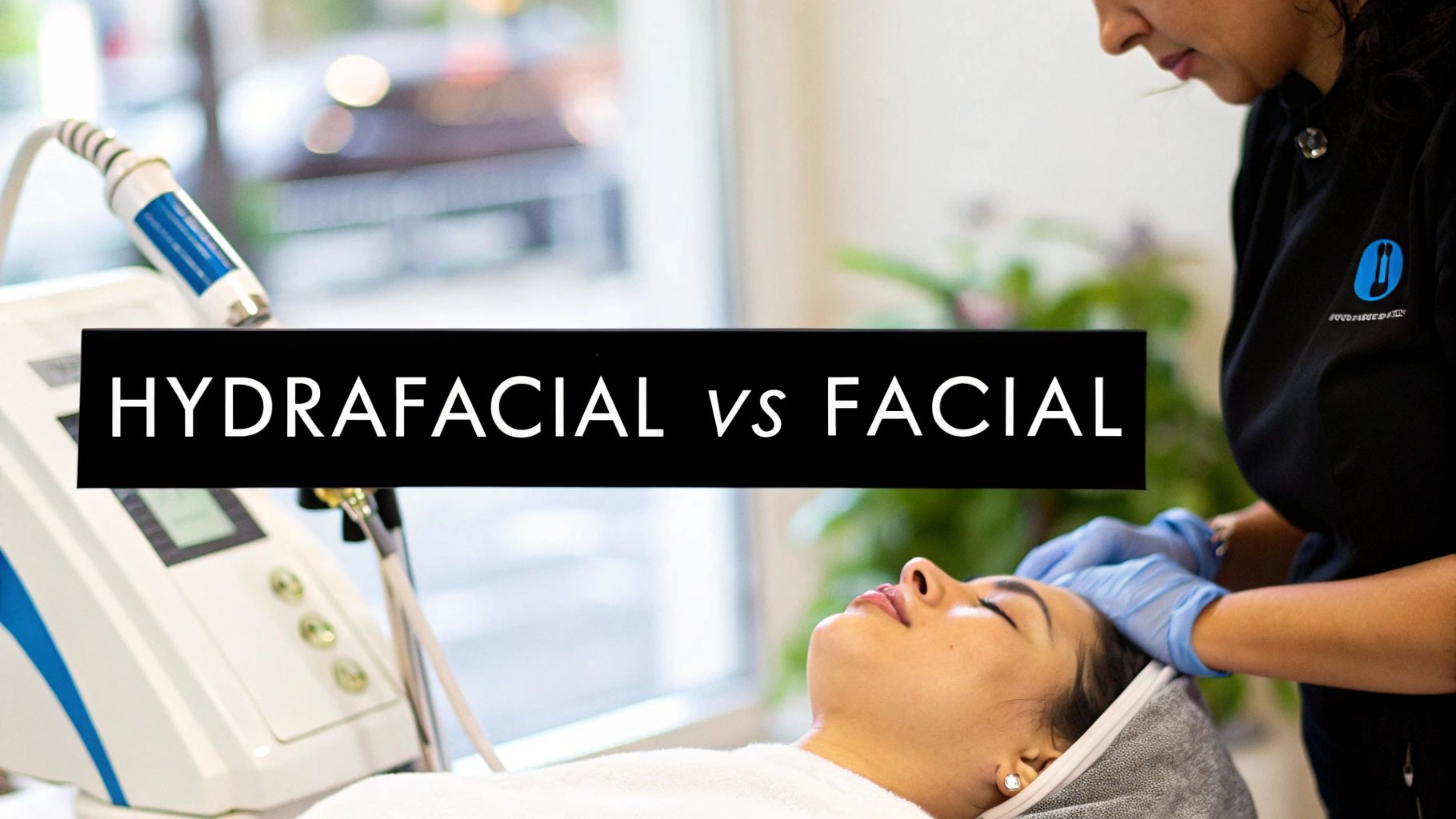
October 11, 2025
Learn the key differences between hydrafacial vs regular facial to choose the right treatment for glowing, healthy skin. Read our expert guide now!

October 10, 2025
Explore the best treatments for sagging skin, from non-invasive to surgical options. Find the perfect solution to restore your youthful appearance.